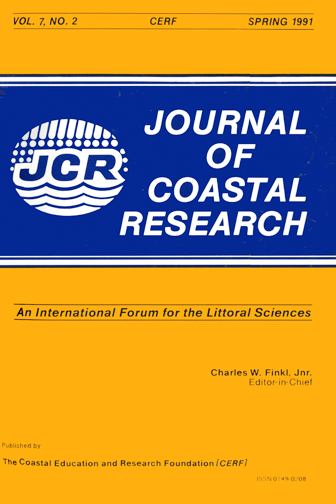Seismic-Stratigraphic and Geomorphic Evidence for a Post-Glacial Sea-Level Lowstand in the Northern Gulf of Maine
Keywords:
Glacioisostatic response, isostatic response, sea-level change, seismic reflection profile, shoreline position, deglacial downdrawAbstract
Rapid late Quaternary relative sea-level changes controlled shoreline position and stratigraphy of the inner continental shelf of the western Gulf of Maine. Seismic stratigraphic interpretation of approximately 1600 km of high-resolution seismic reflection profiles reveals distinctive shelf terraces, most abundant at a depth of 50-65 m. Characteristics of these features include: a discontinuous terrace form composed of unconsolidated sediment, a steep slope that dips seaward, a unique internal seismic stratigraphic sequence, and a surface texture of generally coarse-grained material. These shelf terraces are primarily erosional components of a lowstand shoreline, submerged by Holocene sea-level rise. Infrequently, littoral accumulation forms occur at the lowstand position. Similar accumulation forms are also found in shallower depths within sandy embayments. The inferred postglacial sea-level lowstand occurred at a depth of approximately 55-60 m below present and formed a shoreline during relative stillstand. These events occurred at 9,500 ± 1,000 BP, when the rate of isostatic rebound of the land equaled eustatic sea-level rise. Although the exact chronology and detailed stratigraphy of the lowstand shoreline are not completely understood, the bathymetric expression, seismic signature, orientation, depth, and estimated age are generally consistent with field evidence for lowstands reported from other locations in the western Gulf of Maine. Documentation of the depth of this shoreline provides additional constraints to geophysical models of glacioisostatic response. Existing models currently predict a much shallower early Holocene lowstand, in contrast to field evidence. Dating of this shoreline, coupled with consideration of rapid deglacial downdraw in ice streams and sharp gradients in ice thickness, should improve geophysical modeling of the isostatic response to the latest deglaciation of the Gulf of Maine.


